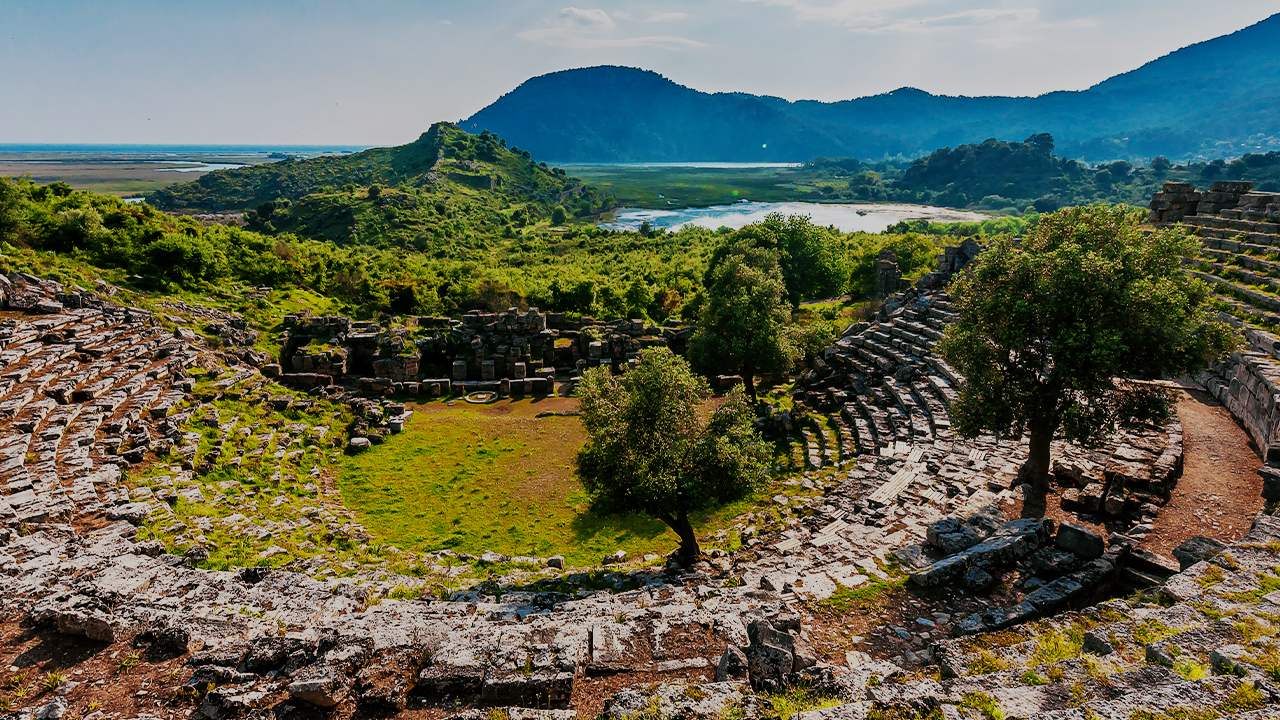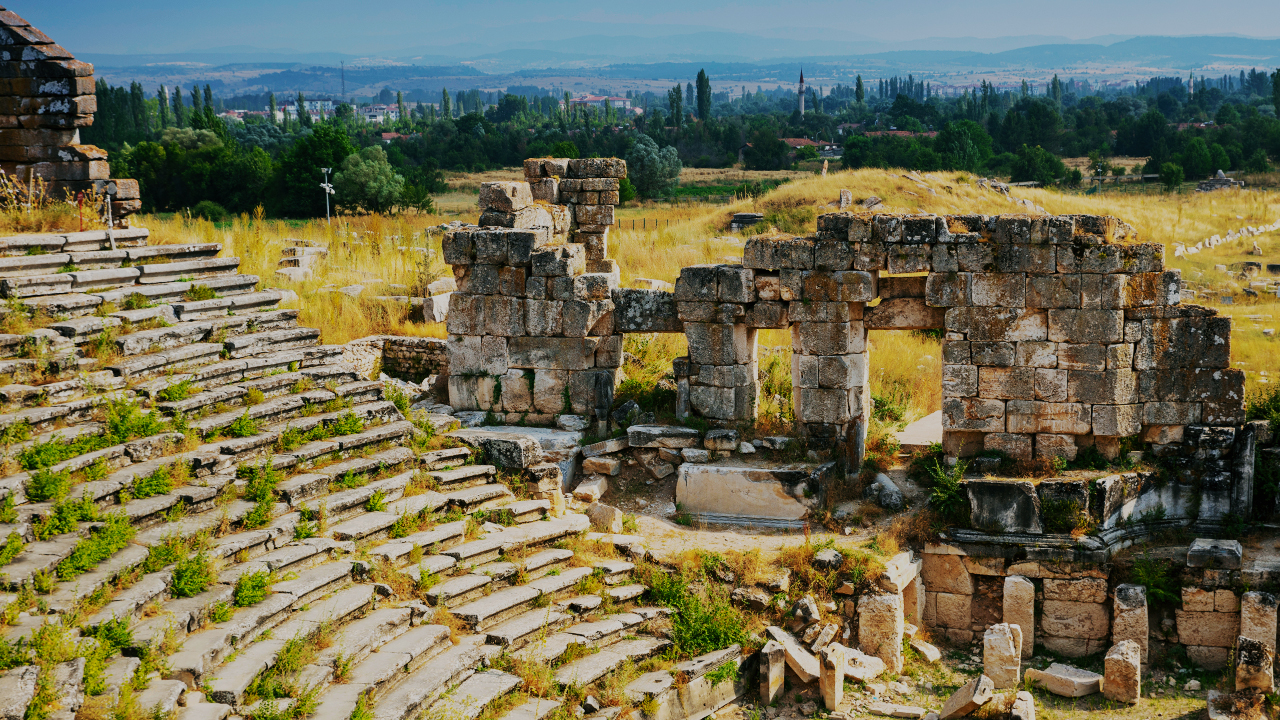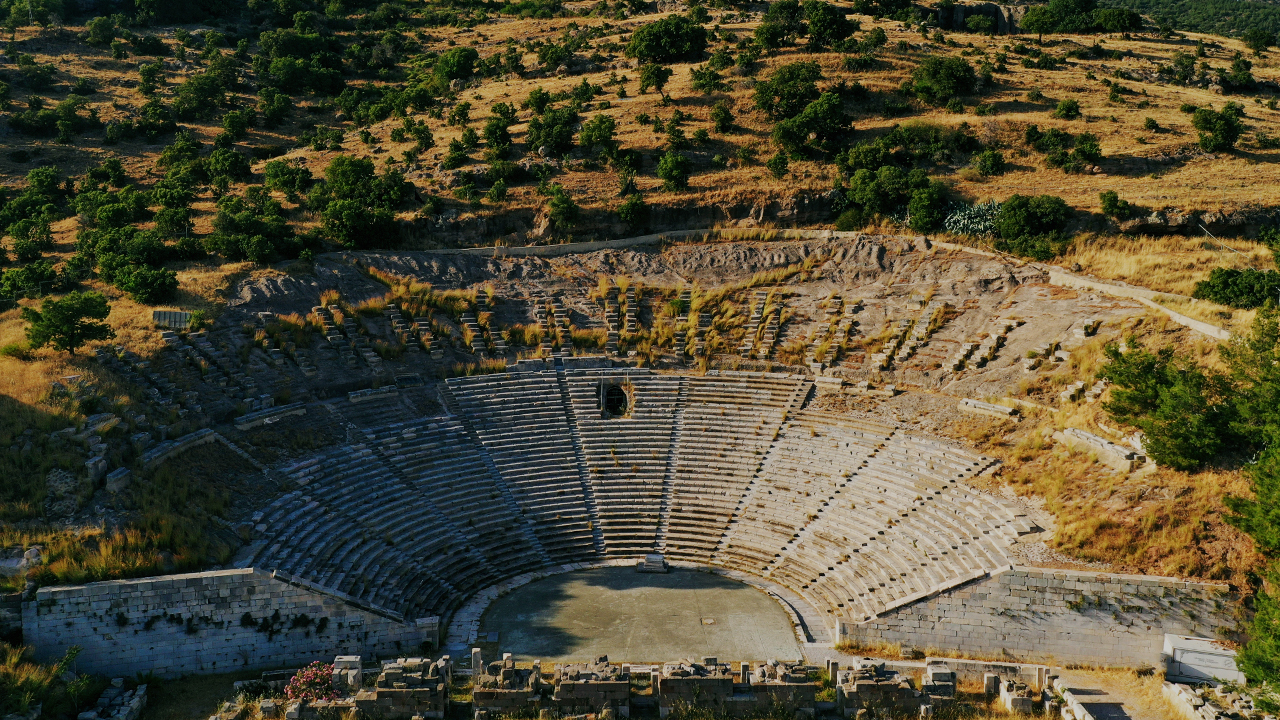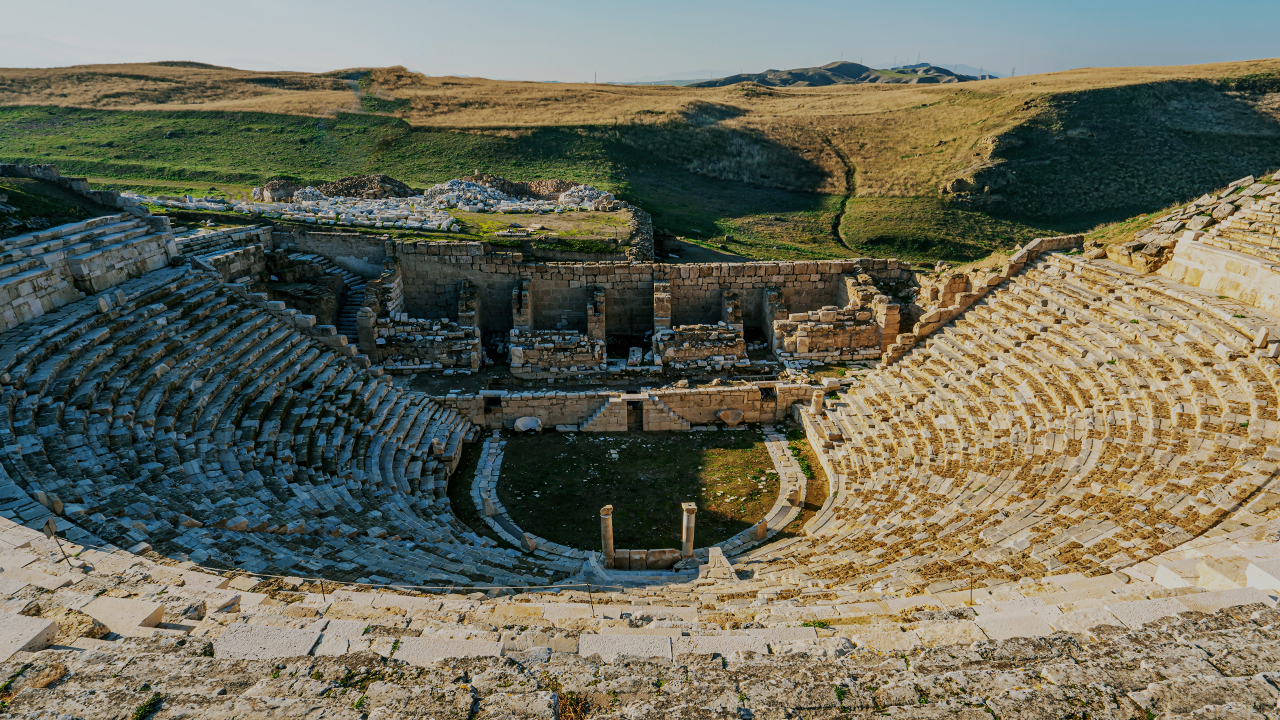
13.08.2024
5 Dakika
The Aegean Region is home to significant structures where the coastlines with the most beautiful shades of blue meet historical richness. With some of its ancient sites inscribed on the UNESCO World Heritage List, this region stands as a treasure trove of culture for both Türkiye and the world. To uncover the millennia of history etched beneath every stone, column, and relief that has survived to this day, to discover the role of theaters in ancient civilizations, and to embark on a magical journey that bridges the past and present, we have compiled a list of 5 must-see ancient theaters in the Aegean Region.

Kaunos Archaeological Site is an ancient city that, despite being discovered late, has provided extremely enlightening information in the field of archaeology. Located conveniently just outside the modern-day holiday destination of Dalyan in the Aegean Region, and being a UNESCO World Heritage Tentative List site, Kaunos was established in the 4th century BC, and developed with fishing, fig growing, animal husbandry, and maritime trade, as its main sources of income.
The theater of the city—less than 4,000 in population—has a seating capacity of over 5,000, and is a remarkable example of ancient Roman architecture. The results obtained from the excavations of the city indicate that the structure underwent five different construction and transformation phases. The earliest stage structure built in the Kaunos Theater has a unique characteristic not previously encountered in theaters in Asia Minor: it has paraskenia on both sides. These and similar findings discovered in the ancient city have made an important contribution to the architectural and historical studies of ancient theaters.

Located in the Çavdarhisar district of Kütahya, the Aizanoi Archaeological Site was the primary settlement for the Aizanitis people of ancient Phrygia. During the Hellenistic Period, this area was occasionally controlled by Pergamon and Bithynia cities, but it came under Roman rule in 133 BC. During the Roman Empire, Aizanoi prospered through the production of grain, and wool, earning a reputation that extended beyond the region.
The city's stadium-theater complex, with a total capacity of 33,500, was completed in the 3rd century AD. This unique ancient theater, unlike any other in the world, is a testament to the grandeur of Aizanoi Ancient City. Its captivating decorations and impressive acoustic system also draw the attention of visitors.

Located in the inlands of İzmir today, Bergama Pergamon Acropolis, was built on a hilltop due to the region’s geographical conditions. Therefore, it has a unique city layout and planning. With no natural flat land available, the founders resorted to terracing methods, and over time, older terraced terrains were integrated into newer ones, making it difficult to identify the original settlements. However, the oldest identified settlements date back to the 7th-6th centuries BC.
The Acropolis, listed as a UNESCO World Heritage site, boasts a theater positioned on the slopes, with a capacity of 10,000 spectators, and considered amongst the steepest theaters of the ancient world. Renowned for its acoustics and architecture, this theater is one of the most impressive structures in both the Acropolis and the broader Pergamon region. Pergamon, flourishing during the Roman period, underwent extensive excavations in modern times, revealing other theater structures of varying capacities, some of which are open to the public.

Located in the Bodrum district of Muğla, the Bodrum Ancient Theater dates back to the 4th century BC. This magnificent structure, nestled against the southern slope of Göktepe—which was used as a necropolis—stands out with its unique city and sea views.
The theater, believed to have a capacity of 10,000, exhibits characteristics typical of pre-Roman Imperial Age theaters. Today, the ancient theater, still preserving its historical function, is open to visitors, and hosts artistic and cultural events with a seating capacity of 3,100. You can also explore this ancient theater during your Bodrum holiday and enjoy a historical journey by participating in these amusing events.

Located in the Pamukkale district of Denizli, Laodikeia Archaeological Site was founded in the mid-3rd century BC by Seleucid King Antiochus II Theos. Its strategic location led to economic prosperity, which in turn spurred construction and population growth. Cultural and artistic activities, which thrive wherever humans are present, also bestowed upon the city two theaters, the Western and Northern Theaters, belonging to the Hellenistic and Roman periods.
The Western Theater, dating back to the Hellenistic period, was carved into the natural terrain and had a seating capacity of 8,000. The second one, the Northern Theater from the Roman Imperial period, was also carved into the natural terrain. Its parodos walls and supporting structures were made of travertine, blending in with the region's geography. Studies reveal that the stage facade and cavea were entirely made of marble, featuring a curved stage and a spacious orchestra area. Recent research has uncovered inscriptions and a numbering system on the seating steps, indicating that certain seats were reserved for specific individuals. With all these features, Laodikeia Archaeological Site, listed on the UNESCO World Heritage Tentative List, offers a glimpse into the city's rich history and cultural heritage. To learn more about the site, you can read our blog post titled "Excavation Sites in 5 Questions: Laodikeia".